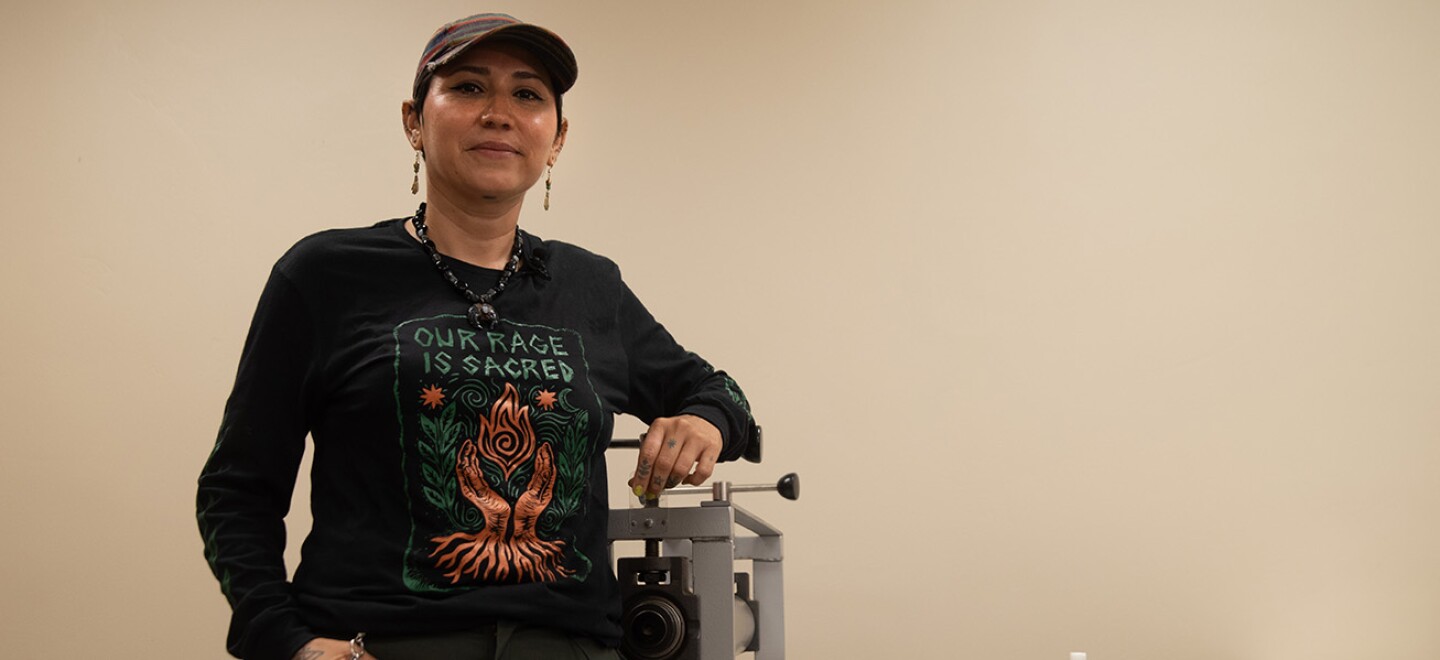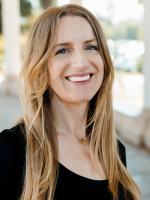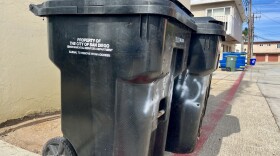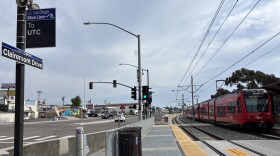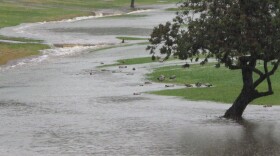Chicano Park Museum and Cultural Center 3rd Anniversary
3-7 p.m. Saturday, Oct. 11 | CPMCC, 1960 National Ave., Barrio Logan | Free | MORE INFO
Irie Zepeda's excitement is palpable. In a low-slung building shaded by the towering arc of the San Diego-Coronado Bridge — just steps from the legendary Chicano Park murals — Zepeda demonstrates a simple pinwheel printing press.
"Wow, I mean, I can talk about printmaking for a very long time," Zepeda said.
Zepeda is an art therapist and founder of Por la Mano Press, a skill-sharing project bringing DIY printmaking techniques, inner child healing and more to the community. “Por la Mano” translates to "by the hand," inspired by Zepeda's ancestry as well as the simplicity of do-it-yourself art.
"You can cut out the middle person, right? You can create your own design from a block to a shirt. You don't have to ask anyone else. It's just right there in front of you," they said.
They point to the Chicano concept of rasquache, a term employed by artists and academics to identify resourcefulness and a return to Indigenous practices or aesthetics — something they say was pivotal to the Chicano movement.
"Rasquache is a big — it's a word that's part of my community. It's like, you make the most from the least," Zepeda said. "And I think printmaking is very much that. It even is rooted as a form of resistance and resilience in the movement. It was an easier way for folks to make accessible posters and flyers to get their messages out there."
This Saturday, Por la Mano Press will activate a new printmaking studio at the Chicano Park Museum and Cultural Center for its third anniversary as a museum space and 10th anniversary as a community organization. In addition to exploring the gallery and enjoying live music and food, visitors can try their own hand at printing techniques and decorate their own totes or clothing.
While the studio has a functioning pinwheel press and heat press, Zepeda stresses that printmaking is simple — no special equipment is necessary.
"I try to teach my community this is such an accessible medium. The tools are really easy to get. You can get a block anywhere. You can create and carve really easily, and then from there you can create stickers, you can create posters, you can create merchandise," they said.
Interview highlights
On working with hands and tradition
Working with my hands is really important to me — and that's rooted in my family values. My grandfather, my grandmother, they all work with their hands. They worked the land; they made tortillas by hand. They were craftspeople. In the printmaking process — you can't really have the printmaking process without the hands. The hand is like a bridge. It's a thing between you and I. It's a handshake; it's a thing that connects us.
On skill sharing and community
I want to teach what I know, right? I grew up with a single mother of five. She had a hard time raising us. But I know the privilege for me to have gone to school to get my master’s, even though that really took a lot for me. I want to give back to my community and make things accessible. So it really came about with skill sharing. I want to show what I know, and that came in the form of workshops, community work, bringing artists together. Por la Mano evolved into sort of a platform so I could do events and also highlight other artists and other folks in my community who are doing similar work.
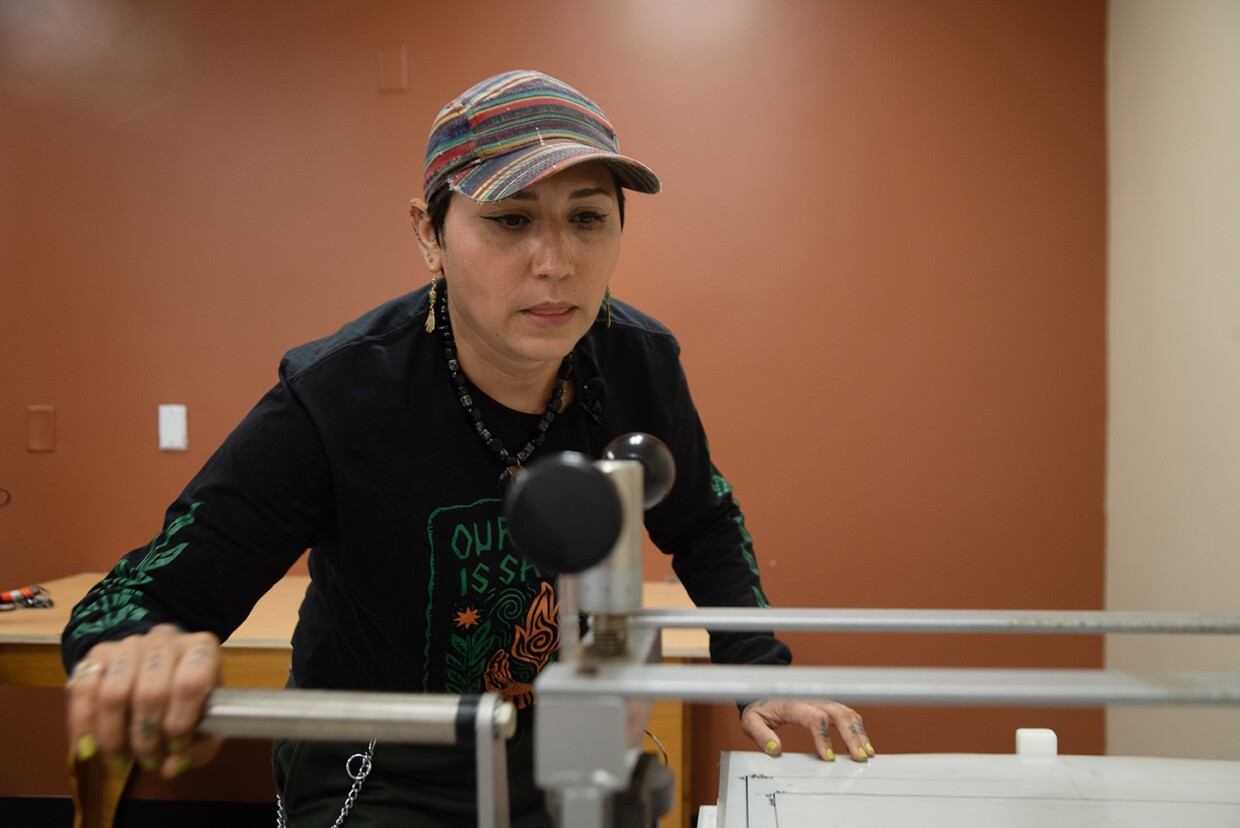
On rasquache: making the most from the least
Rasquache is a big — it's a word that's part of my community. It's like, you make the most from the least. When you go into someone's house — like a Latin home, Mexican home — and you see their furniture, a little bit of this, a little bit of that, that's the idea. You're making the most with the least.
And I think printmaking is very much that. And it even is rooted as a form of resistance and resilience in the movement. It was an easier way for folks to make accessible posters and flyers to get their messages out there.
On art as a healing process
Art was my healing. And I think it starts with ourselves. Like what we're taking — it has to be our own medicine. Art and expression have been my medicine, and printmaking is a process just as is healing.
So printmaking is the conceptualizing of the idea, and then you start to draw, and then you start to carve, and then you have the block, and then you ink, and then you print. So, that's a process. Healing is a process, right? So, it really is so symbolic in that way for me — where it's like, "Wow, I can't get from one step to the next step without going through this step."
And healing for me is about going through a process, understanding it, right? And then at the end seeing it in front of you and it's like, "Wow, this was really what I went through. This is what I learned — mí aprendizaje." That's like a deep learning. Aprendizaje means a deep learning. And I was like, "Wow, this whole process has been a tool for me to heal," right? The actual process and the product of it.
It's not just the actual making and the carving and all of that which has helped heal me … but also the results of it showed me my own potential. This is what I have to remind my community. Not to teach them, because they already know it. I believe that is deeply rooted, embedded in us to know these things. We just have to reconnect.
And that's part of the work that I do — reconnecting, reminding people of their sense of love for community, is their sense of love for themselves, and the process and the tools around them to heal and their potential to grow.
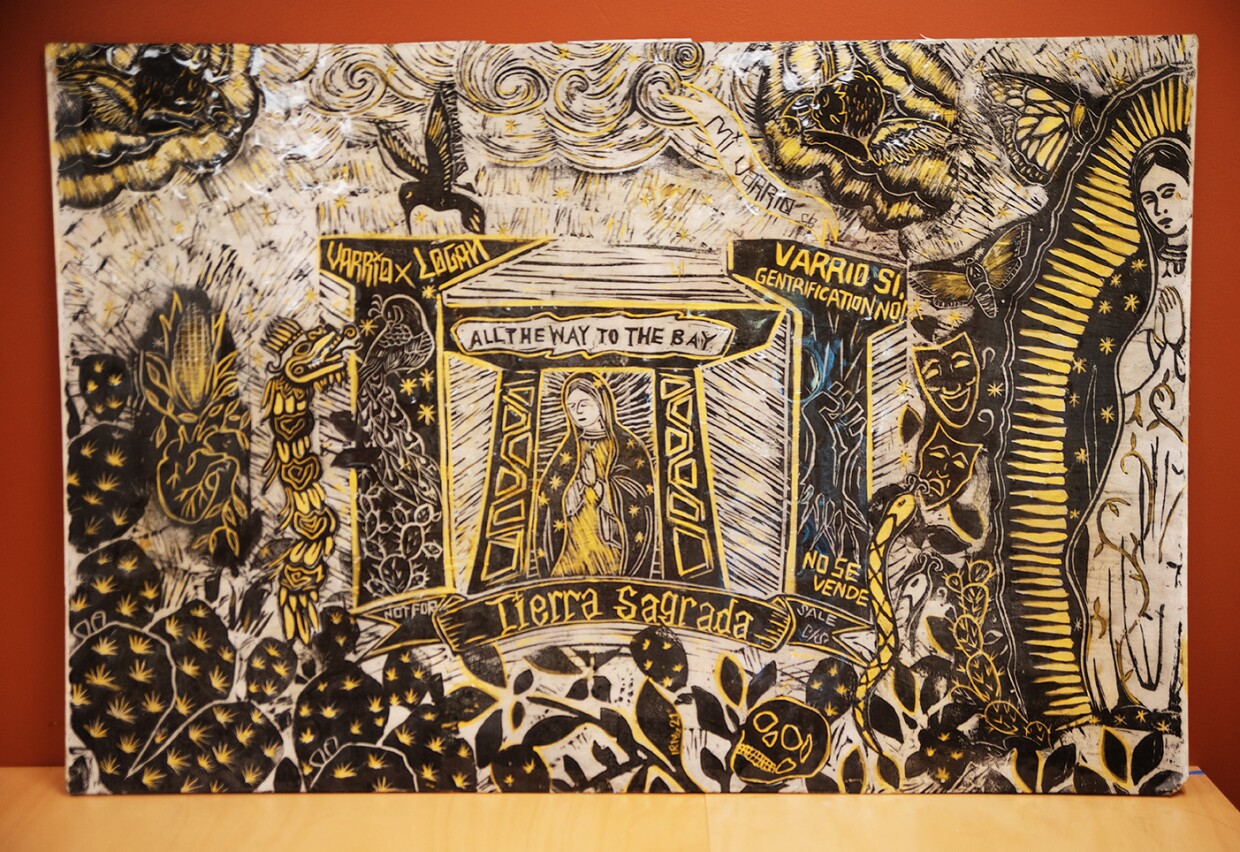
On the significance of the Chicano Park Museum
I am absolutely grateful for the Chicano Park Museum and Chicano Park in general. This was my outdoor gallery as a kid, although the museum was not here — but it's a beautiful thing to have the museum. The museum is a place to archive; it's like this additional pillar to the pillars that are already outside of us, right?
So, it's this other pillar that gets to hold the legacy of all of the work that has been done here and put it out as a visual representation for people — with their full senses — to be able to experience, to see, to feel, to touch. And it's another community hub, right? Which is really important to the foundation of what Chicano Park's legacy is.
This place means a lot — to be able to have this as a platform, have it as a space to archive, as a community hub, as a bridge as well. This is a place about storytelling, keeping stories — and stories are important because that's our history. That's how we really know where we came from.
This interview has been edited for length and clarity.

